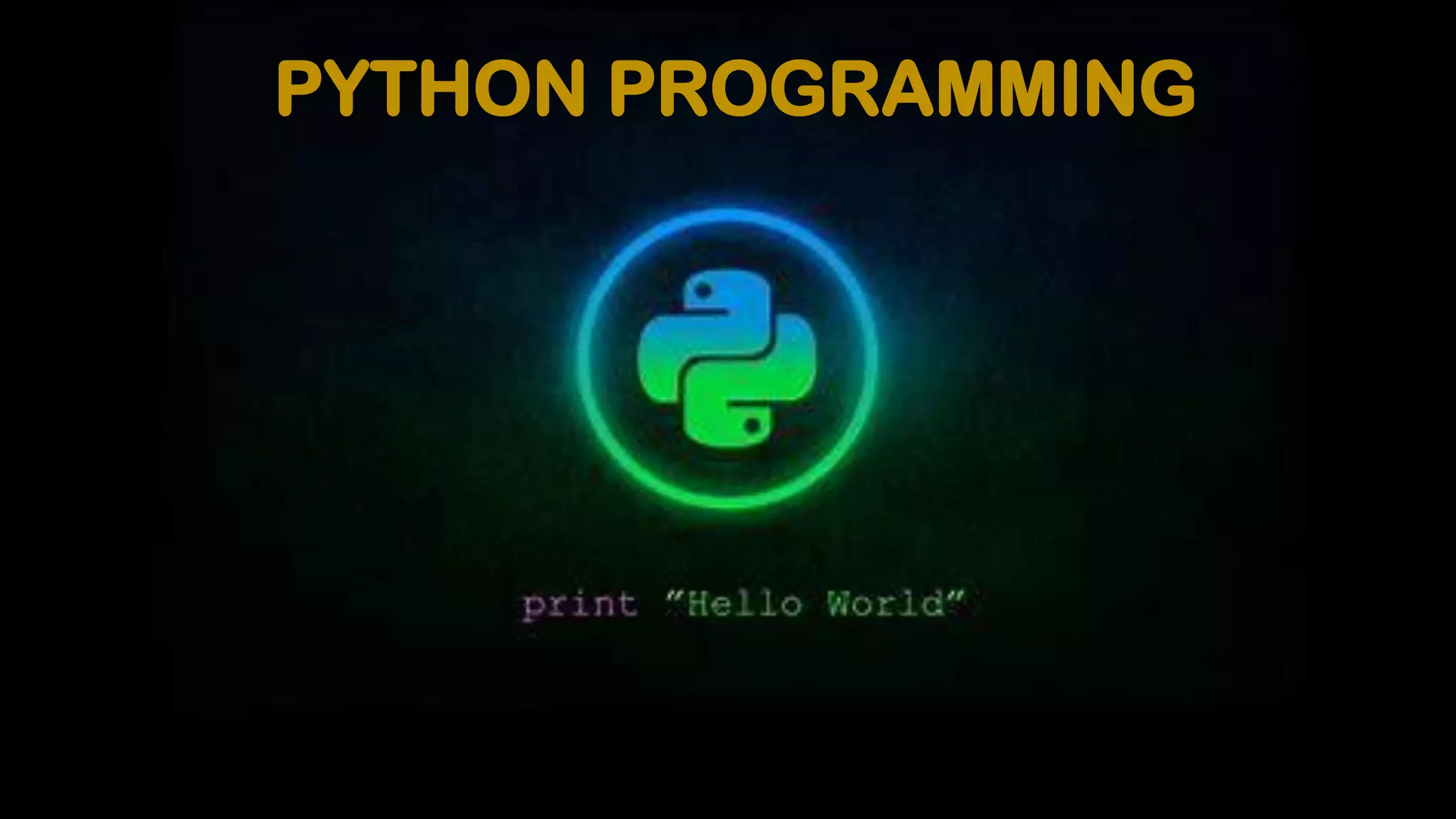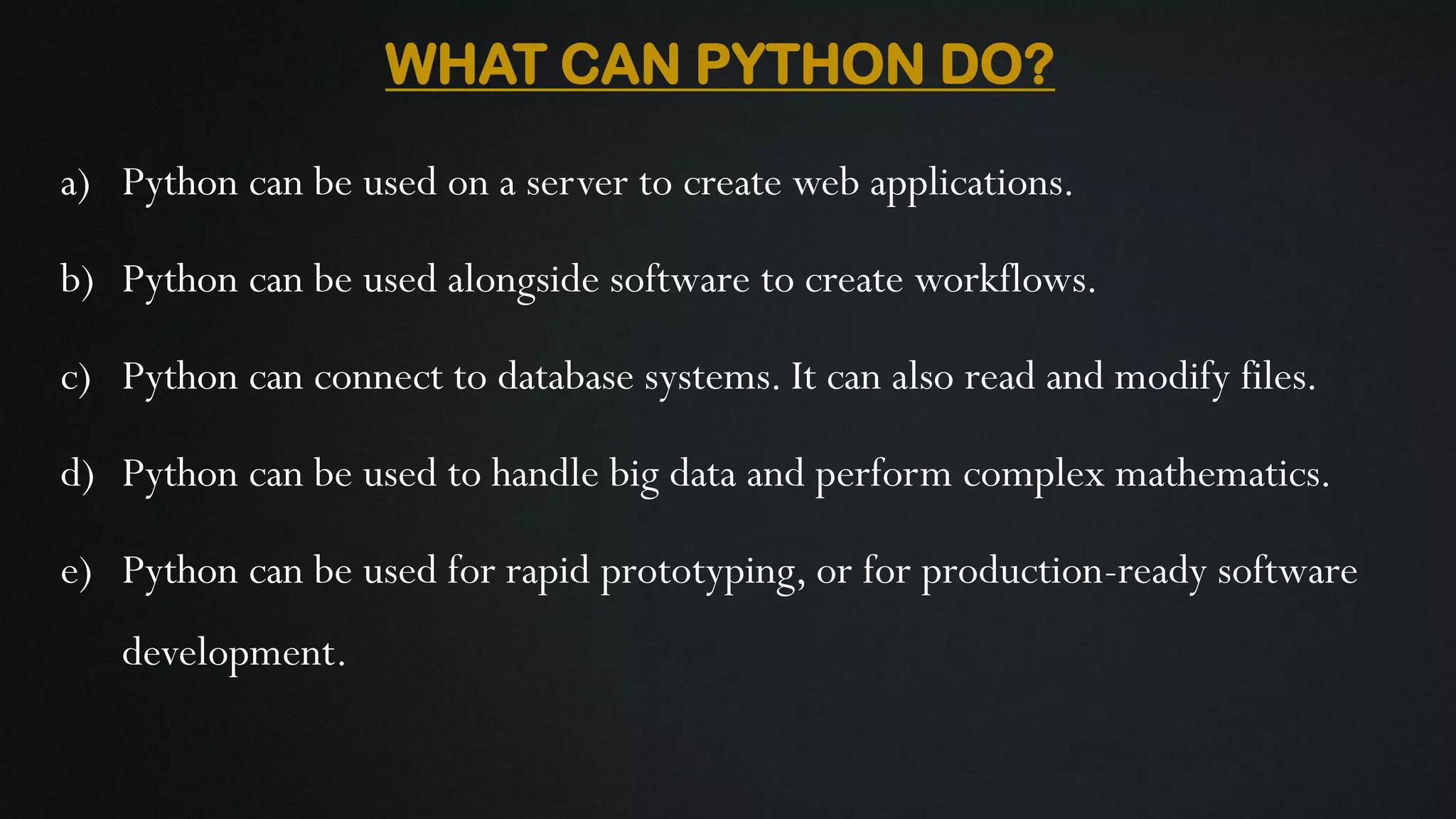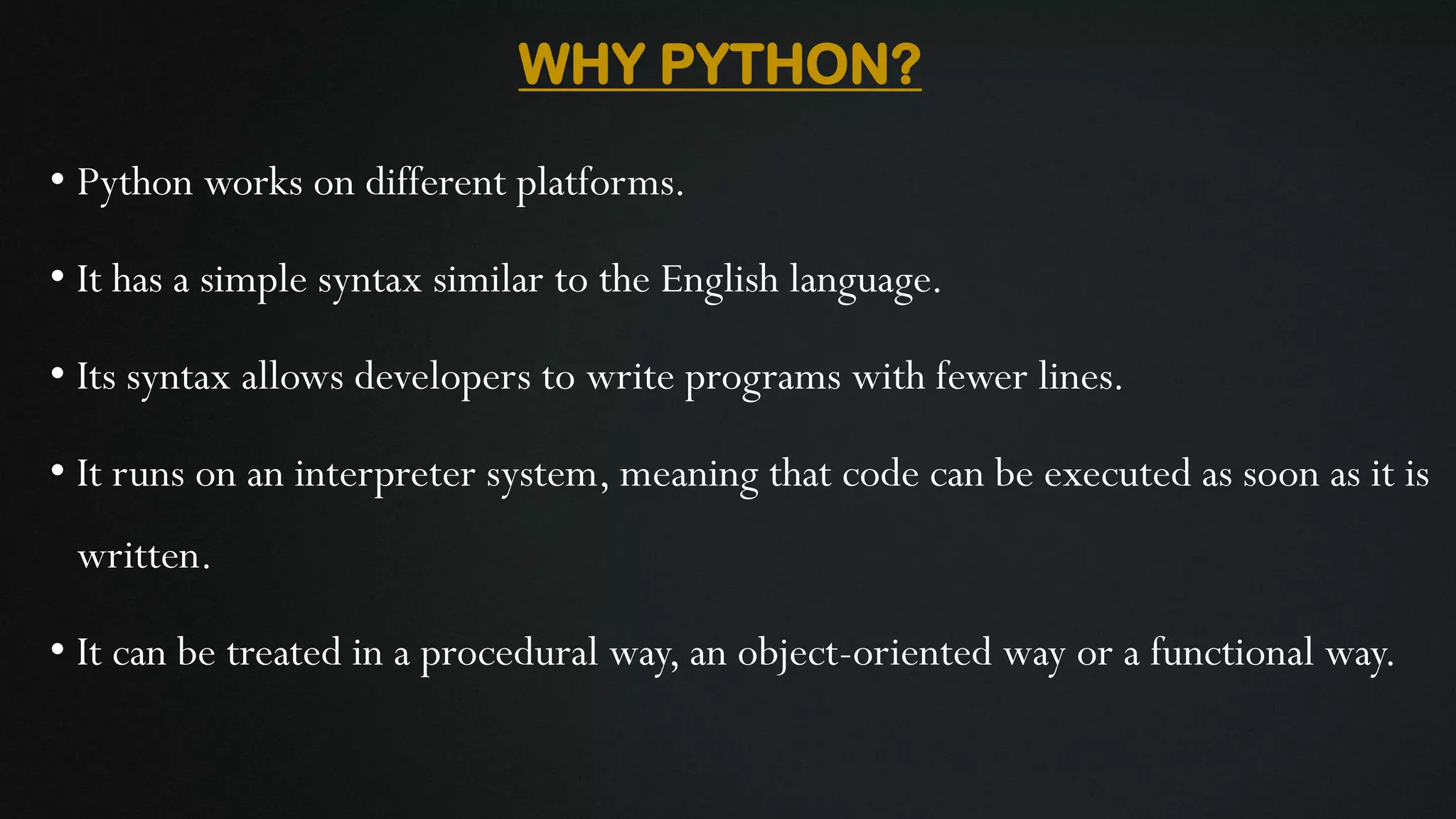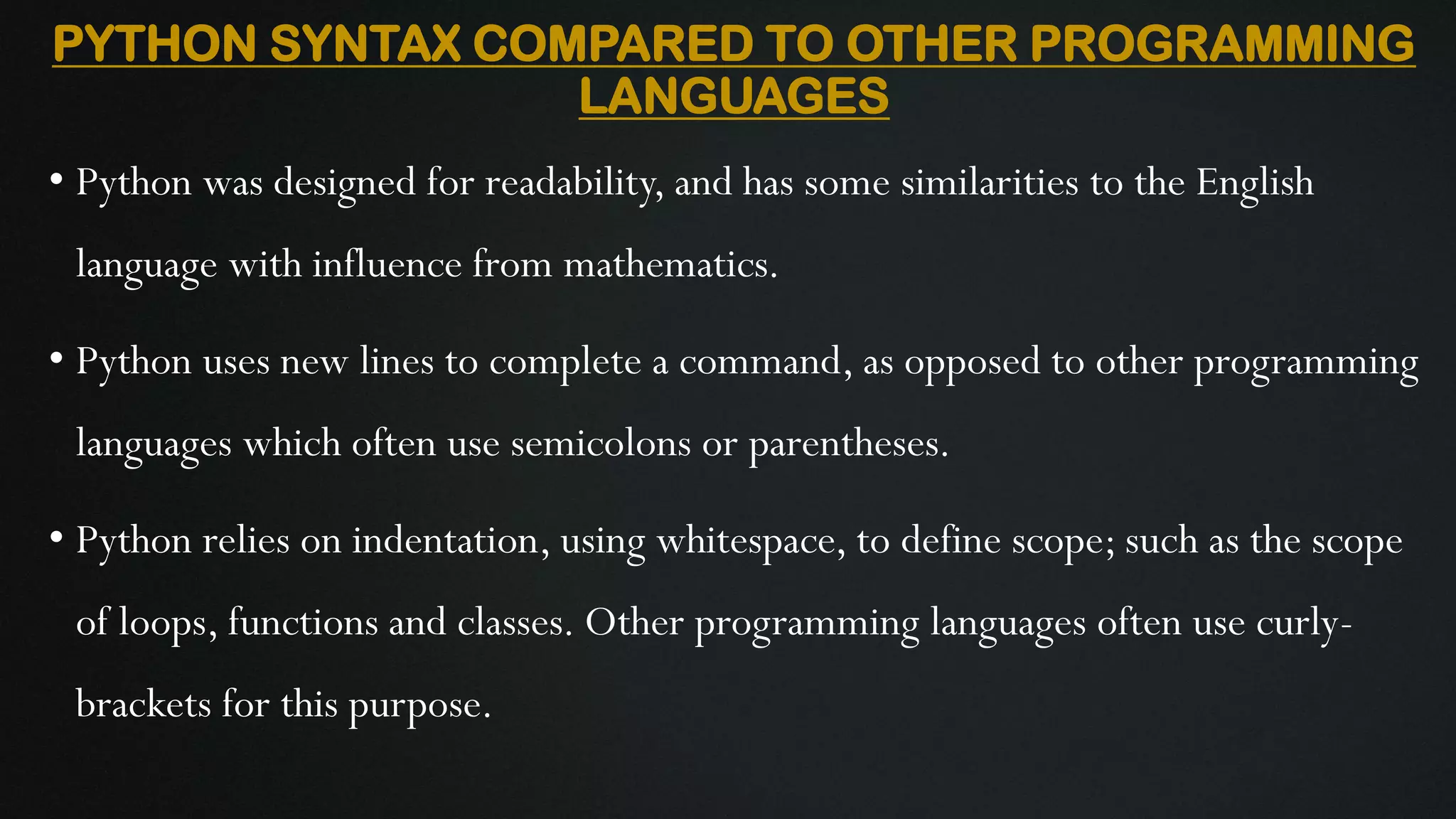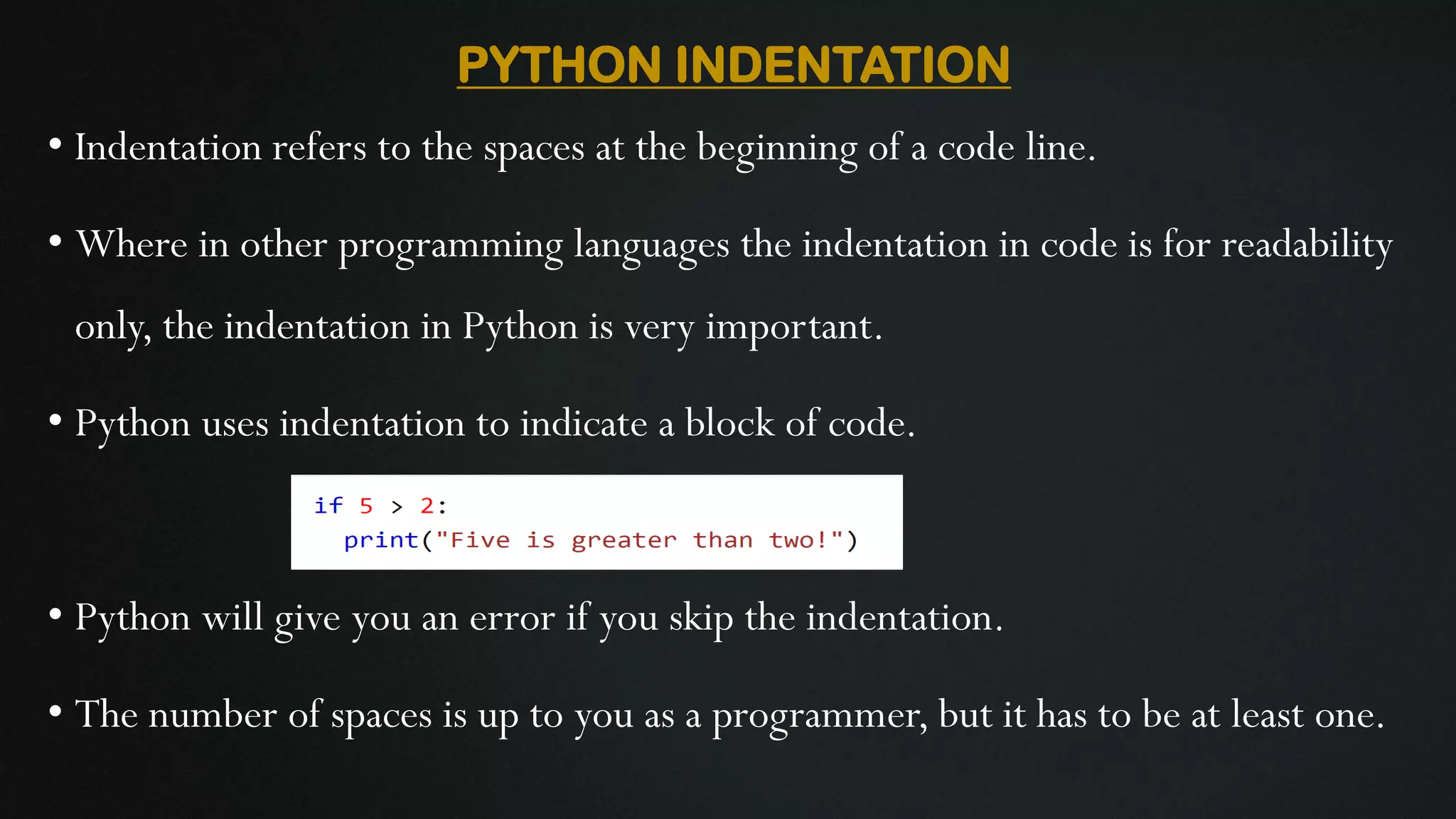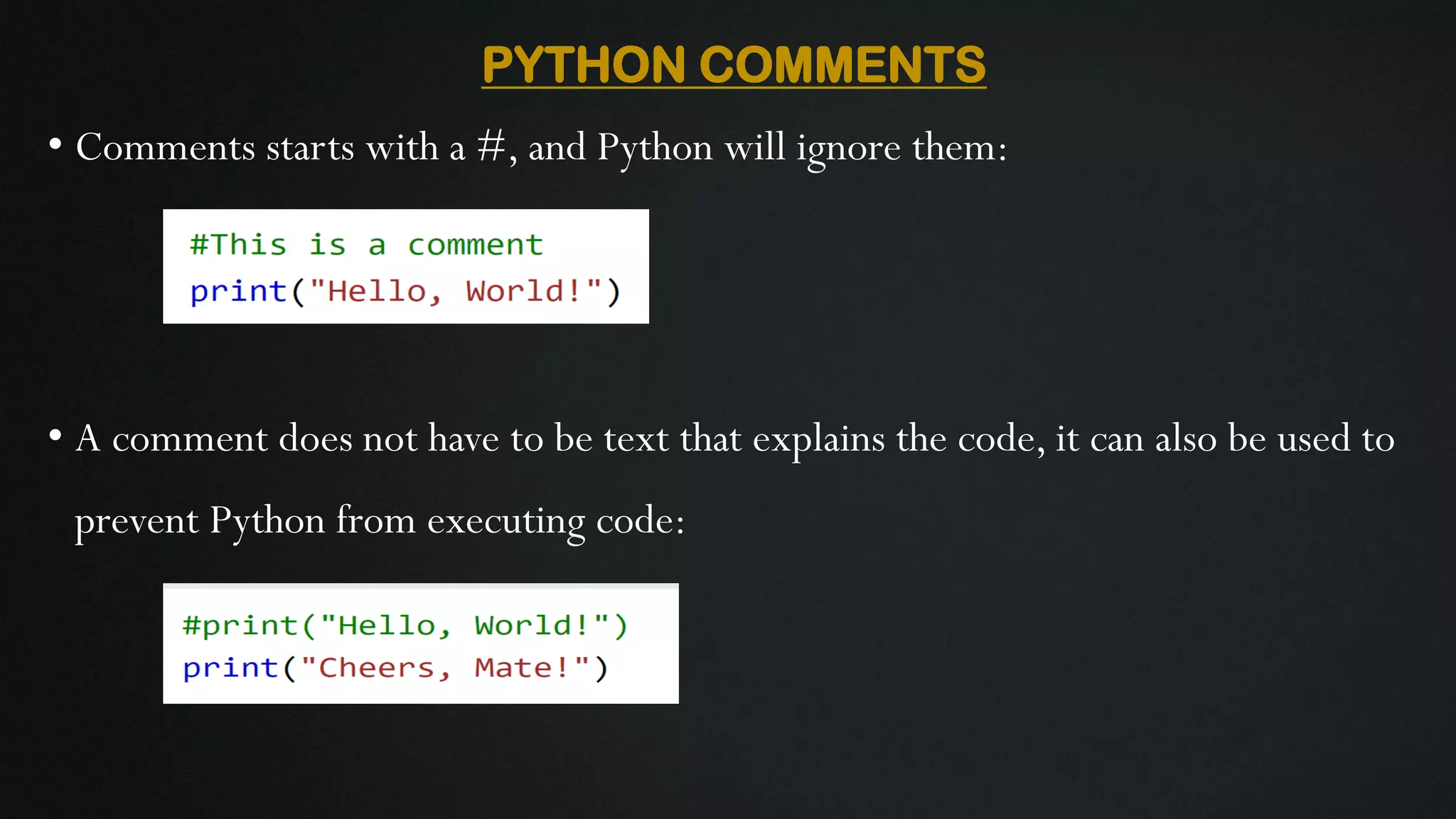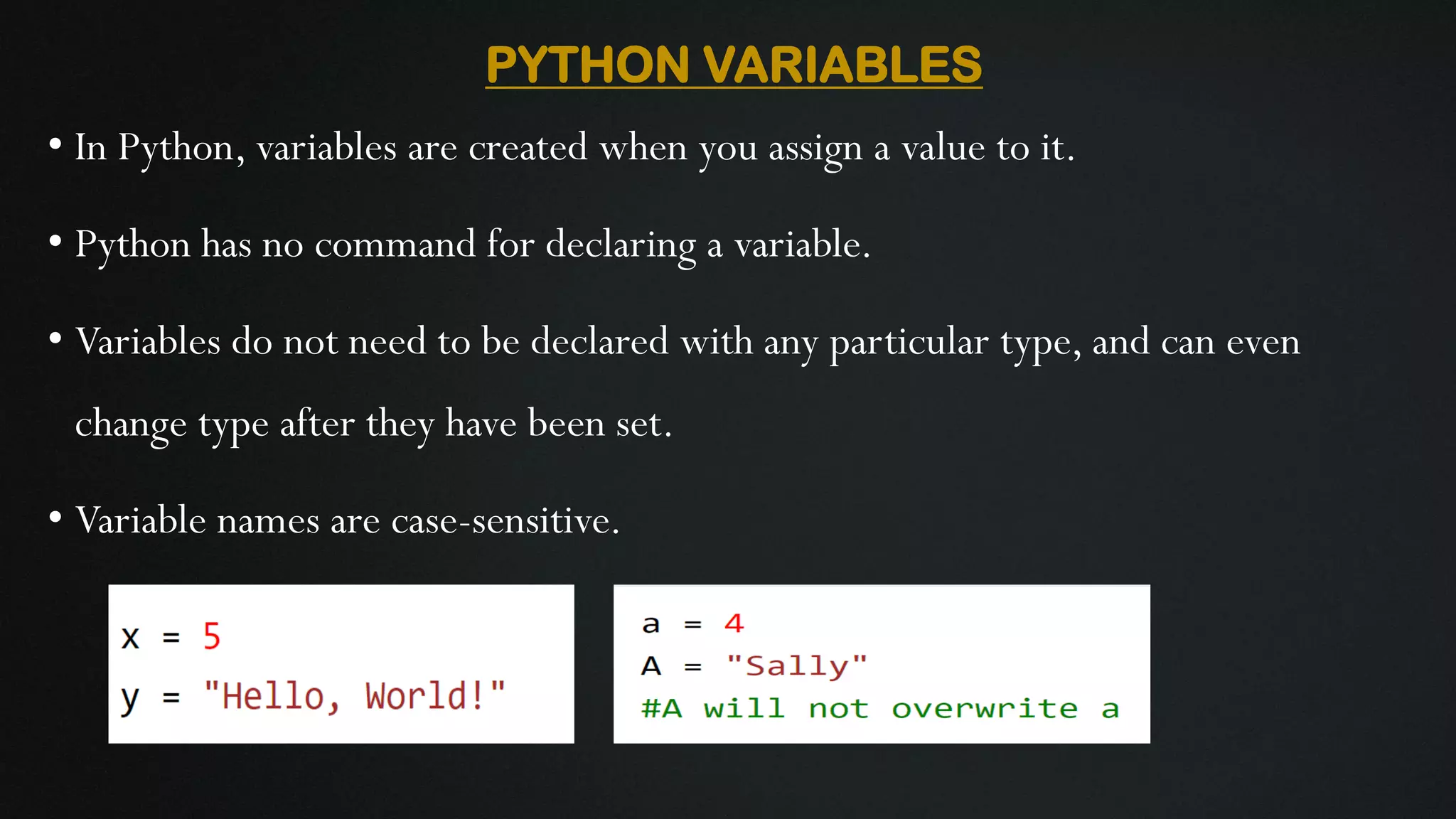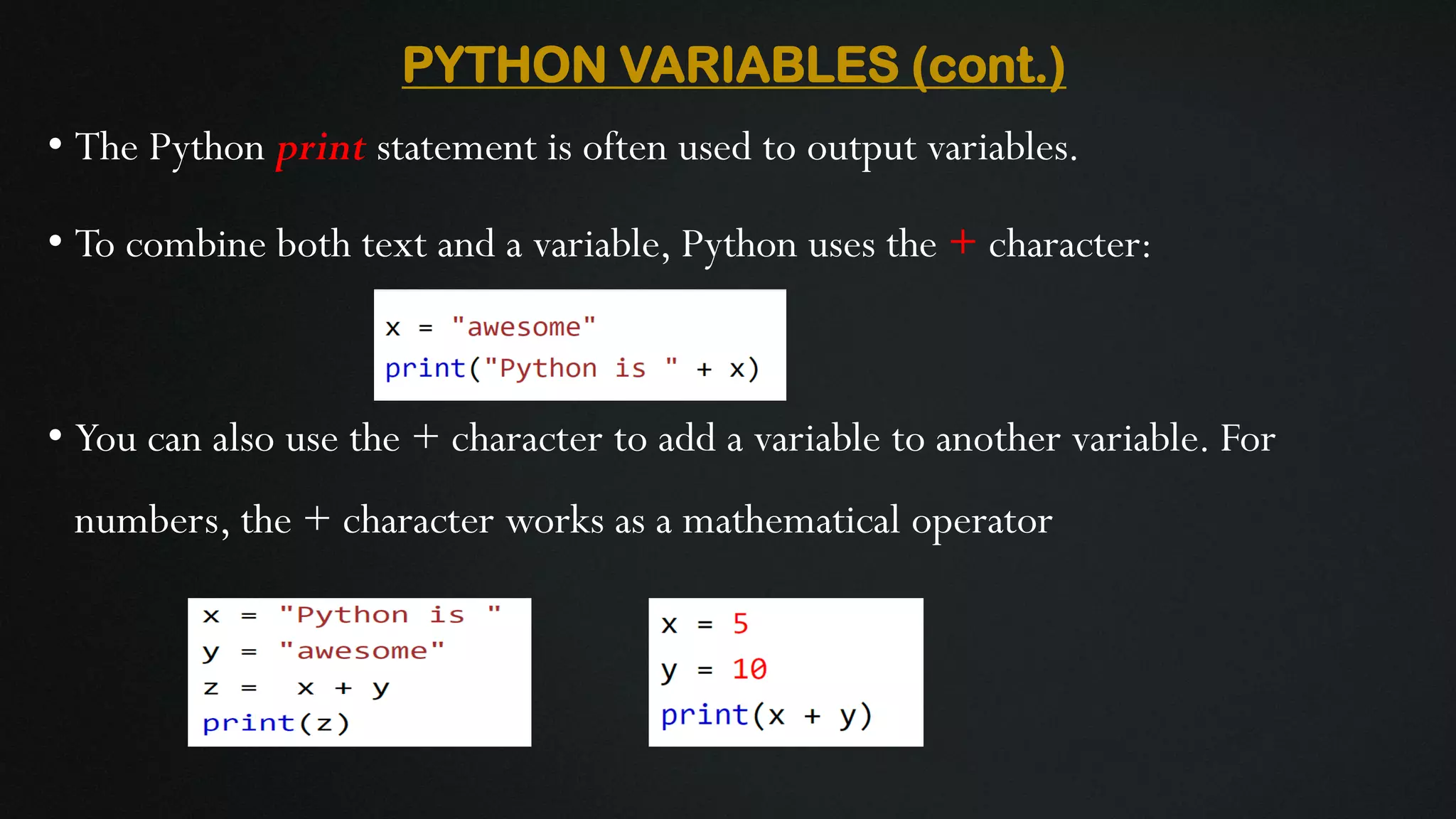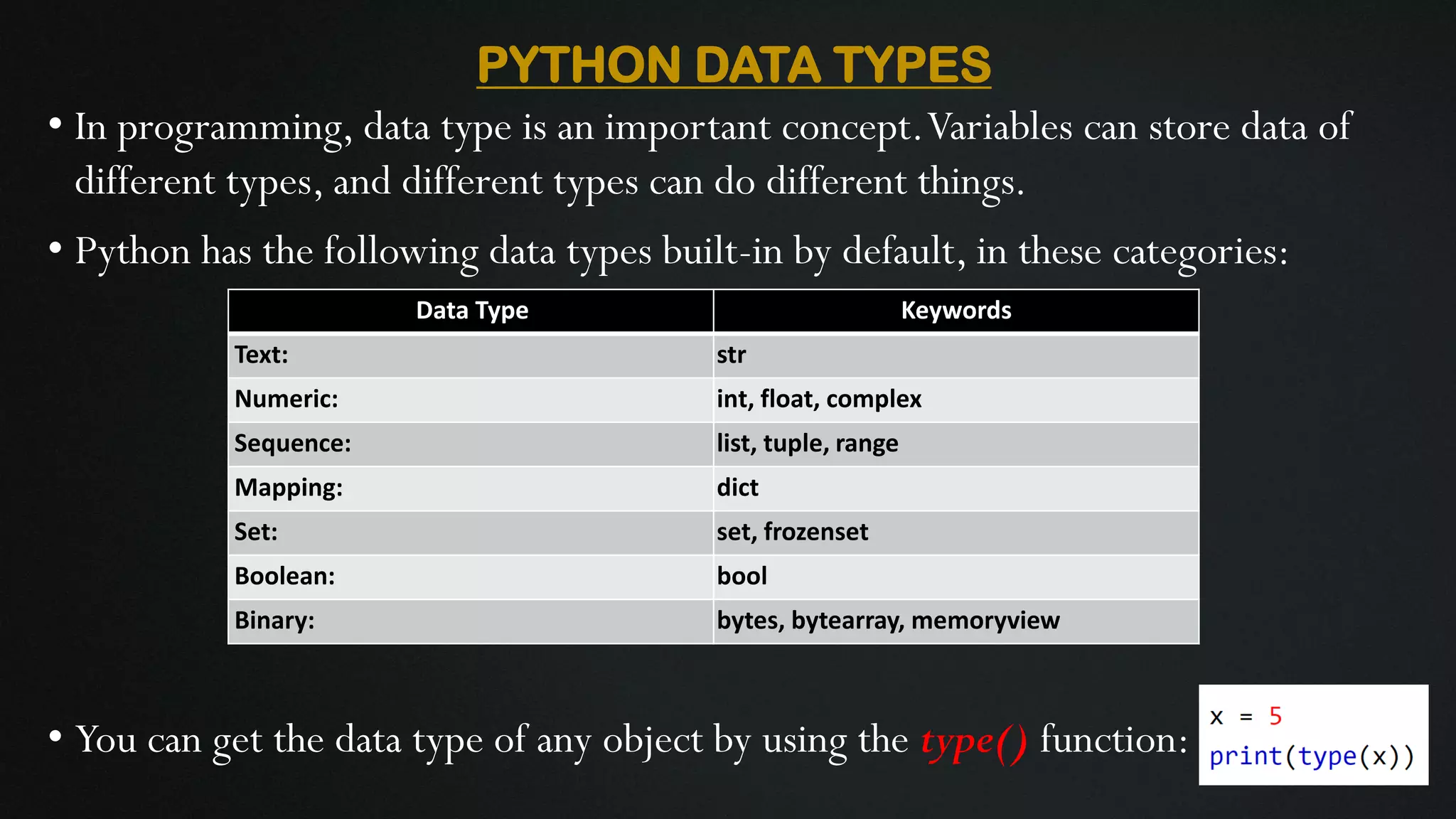Python is a popular programming language that can be used for web development, software development, mathematics, and system scripting. It works on different platforms and has a simple English-like syntax. Python code is executed as it is written due to its interpreter system and can be treated procedurally, object-orientedly, or functionally. It uses indentation rather than brackets to define scope and has built-in data types like strings, integers, lists, dictionaries, sets, booleans, and binary types.
